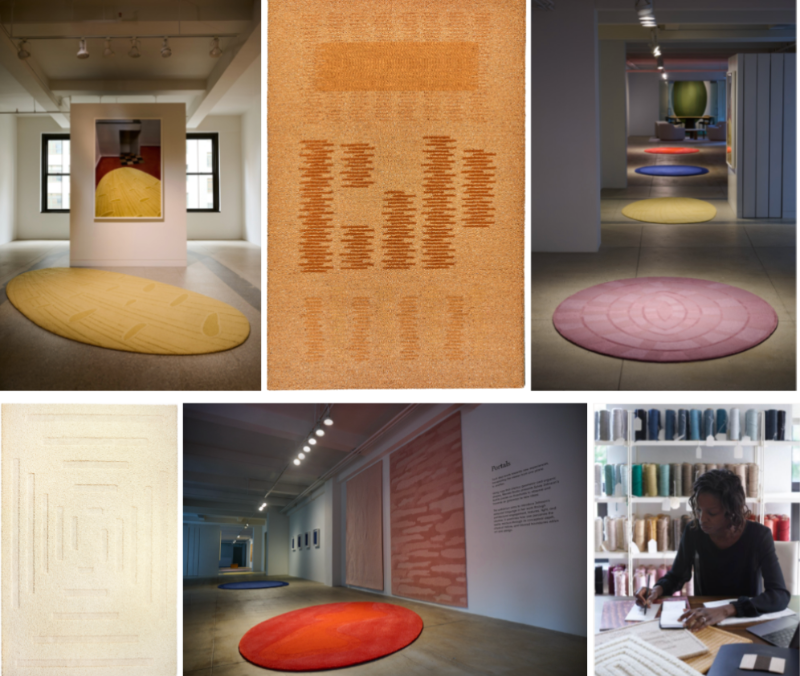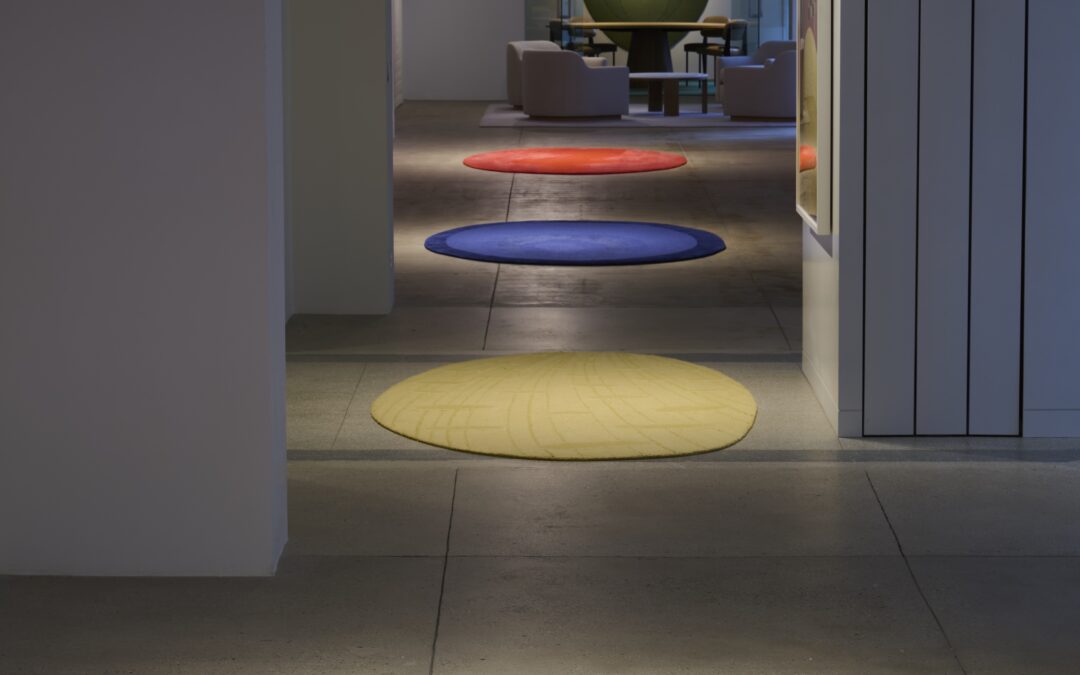From Merida’s Portals exhibition. Photos by Patrick Kolts.
Now showing at Merida Studio is the exhibition Portals.
Running through September 2024, Portals highlights designs from the Atelier Series—a body of work spanning from 2018–2023 that embodies the joint vision of the studio and Paris-based Artistic Director and textile luminary, Sylvie Johnson, who used the the textile medium to explore concepts of depth, physical nature, and blurred boundaries between art and design. The exhibit is curated by Merida Studio Gallery Manager, Aaron Chung. As a workshop at the nexus of art, design, and craft, Merida is dedicated to handcrafting limited-edition, collectible works of textile art—it operates one of the last remaining mills in Massachusetts.
“Sylvie is very influenced by color, movement, light and shadow, art, and topography, so I wanted to be mindful of how we presented these pieces in our showroom,” explains Chung. “She creates these unique yarns and implements various textures into the material that engages with light and shadow in distinct ways—so the question becomes how to present nuance and a diverse assortment. I ended up choosing pieces that explore multiple types of yarn and the different ways in which those yarns are inserted in its respective substrate.”

Chung used the linear nature of Merida’s showroom/gallery and juxtaposed it with oval silhouettes, or “portals,” from the Atelier Series laid down the corridor, where intentional and directional lighting keeps some pieces subdued in shadow, while others are brightly lit, drawing the viewer’s eyes to the pieces lit on the floor, and then gradually expanding to the visual conversations on the wall.
Likewise, some of the rugs are tufted, with areas of the rugs that are purposely trimmed while others are looped—creating distinct interactions of light and shadow in surface areas designed to absorb or reflect. The exhibition entrance, which highlights Gem, a sunny yellow artwork layered with texture and ovals within ovals, perfectly demonstrates the idea of various motifs acting as “portals,”—you zone in on one type of world, and as your field of vision expands, another world opens up.
Play on color is also integral to the exhibition. With the selection of the oval-shaped rugs from the series, a certain color palette was preordained, but the arrangement was deliberate. A primary color scheme takes over in the central part of the gallery, positioned in a manner that references the color wheel and creates color harmony. The surrounding sections meanwhile, speak to a tertiary or monochromatic color conversation that—both separately and as a whole— establish a beautiful rhythm. Color is expertly and subtly used to convey movement and transition: each step is designed to lead to a new experience, transporting the viewer from one plane to another, with each rug serving as a threshold to observe and traverse as a gateway to new ideas.
For more information on Portals, visit meridastudio.com

